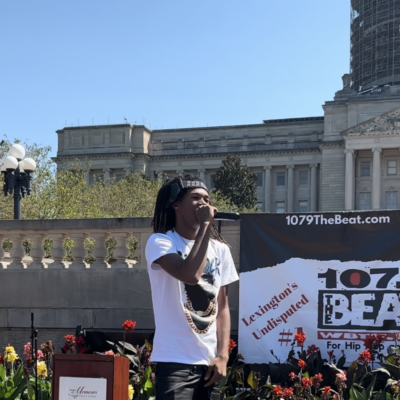synopsis : Carrie Bradshaw’s tutu. Miranda Priestley hair. Betty Suarez red frame glasses.even if you’ve never heard of it Patricia Field, no doubt deeply acquainted with her legendary designs. “Happy Closing: A Movie About Patricia Field” A deep dive into the legendary life of this iconic costume designer. Join Field and her countless friends, team members and collaborators down memory lane to see how some of the most memorable film and TV costumes came to life.
Field was the costume designer for the 1987 film ”Breakfast”.ladies please be careful]and the TV series “crime storyAfter meeting Sarah Jessica Parker while filming the movie in 1995, miami rhapsodyThey became friends, and Field was in charge of the costume design for the TV series “”.sex and the cityThe show has also become famous in fashion, In particular, it was highly evaluated for its individuality and unexpectedness.Emmy Awards her worksex and the cityField received one Emmy nomination five times and four Costume Designers Guild Award nominations six times.
The film included an interview with TV fan favorite Kim Cattrall (““Sex and the City”), Lily Collins (“Emily in Paris”), Sarah Jessica Parker (“sex and the city“), Darren Star (creator of “”)sex and the city“ and “Emily in Paris“), Michael Urie (“Ugly Betty“), Vanessa Williams (“Ugly Betty“), the film takes Field behind the scenes and reveals the thought process behind her designs.
Exclusive interview with renowned fashion designer Patricia Field and director Michael Serdich
Q : Patricia, can you tell us about the Patricia Field Art Gallery where you are doing this interview?
PF: I think this gallery was my idea of an art fashion gallery. As far as I know, this is the only one of its kind. I am happy that the business survives and is recognized. It also helps to let other people know about your gallery. I never wanted to do a street situation. I wanted it to be more intimate, but when I found this place, I thought, ‘Oh, this used to be a dental office. So we made it all public.
Q: Michael, how did you approach Patricia in order to create this intimate and wonderful body of work for her through this film in the first place?
MS: I was working on a four-part documentary series called “American Style” for CNN. [2019]I interviewed a lot of people for that. Pat was one of them and her interview was great. After she left, I said to the staff, “I want someone to make a documentary about this woman.” This is how it all started.
Q: Patricia, your mother had a dry cleaning business and you often helped her with her work. How much did that experience contribute to becoming the designer you are today?
PF: My early experiences with my mother definitely had a strong impact on me. I learned business from my mother. Her store wasn’t too far from where we lived in Manhattan, so as I got a little bigger, she probably had about 5 or so “drop stores” as I called them. But there were no machines or anything, and people began to come and leave their belongings. Because it was such an environment, I learned a lot about business from there.
For example, when my mother’s employees went on vacation, when I was 13 or so, I went in there and ran a drop store where they picked up their clothes. My mother had a factory and she made all the clothing there. So that was my normal way of life.
Q: You describe your store as a daytime club. How would you describe your creative relationship with the New York club scene? Your shop is popular with the transgender and underground communities and is known for what you call “outlandish fashion.” Now
PF: As far as describing my store as a daytime club, it only evolved that way because I was impressed with the fashion sense of the people I hired. I think it basically gave my shop a unique identity. Believe me, I only know it because I heard it. I was in my store, working with the kids I hired, and doing my own business. I never thought of it as something special. But sometimes I read about the store and think, “Oh, that’s nice.” It was a certain environment. Jojo used to work at that store, and Paul, they’re all people I still hang out with over the years.
MS: You were always drawn to the young people around you and were inspired by them.
PF: It’s true. I am young at heart and I empathize with those young people. I have a lot in common with young people.

Q: You also designed the costumes for Japanese singer Namie Amuro’s three music videos: “New Look,” “Rock Steady,” and “What A Feeling.” What do you think about the collaboration with Mr. Amuro?
PF: Not only Amuro, but I have had a huge experience of Japan in my life, my world, and my business. I often go shopping in Tokyo and became very close to a Japanese gal named Masako Kato. Princess Masako has passed away, but unfortunately she had cancer. However, there are museums outside of Tokyo, and some of my staff, Japanese children, were in his museum. Now they want me to come. Because the owner is doing an exhibition of my art that he bought. The owner has purchased many pieces and plans to use this art for a show. It’s okay.
But I don’t know if I can enjoy Tokyo without Masako. we were very, very close. She has a shop in Harajuku and I was standing outside looking out her window. She came up to me and we started talking and we became really good friends from there. I am still in touch with her family and her children who were about 2 years old at the time she died. She is a teenager now.
Q: In “Sex and the City,” each of the four women has a strong personality. How did you work with them to achieve the highly distinctive designs for each character’s clothing that have become a hallmark of the show?
PF: Of course there is a script, which describes the characters. I worked with them on a very personal basis: who they were and what their style was like. I never try to impose a style that the actors are not comfortable with. After all, they are playing characters in front of the camera, so collaboration is very important.
Q: Michael, working with such an inventive designer, what element of her surprised you the most? How did she approach her colleagues and how did she speak to the actors?
MS: To be honest, I’m not sure if working with Pat surprised me in any way. What you’re seeing is what you get from Pat, and everything that made me want to make this documentary turned out to be true. Pat is an incredibly creative, funny, and smart person, and working with her on this project really demonstrated all of that.
Q: Pat, tell us about the movie The Devil Wears Prada. Did Meryl Streep have an idea before working with you and how did you collaborate with her on her outfits and looks?
PF: I’m a big fan of Meryl Streep because she’s one of the most professional actors I’ve ever met. I’ve been a big fan of hers for a long time.when david [Frankel]’ producer and director called me and I told him about the project and he said ‘Meryl Streep’ and I said ‘I’ll take it’. She is so smart that she loves working with her. She is so inspiring, she knows what she likes and is very expressive and communicative in the way she works. It was a sheer pleasure for me.
Please read more articles by Nobuhiro.










